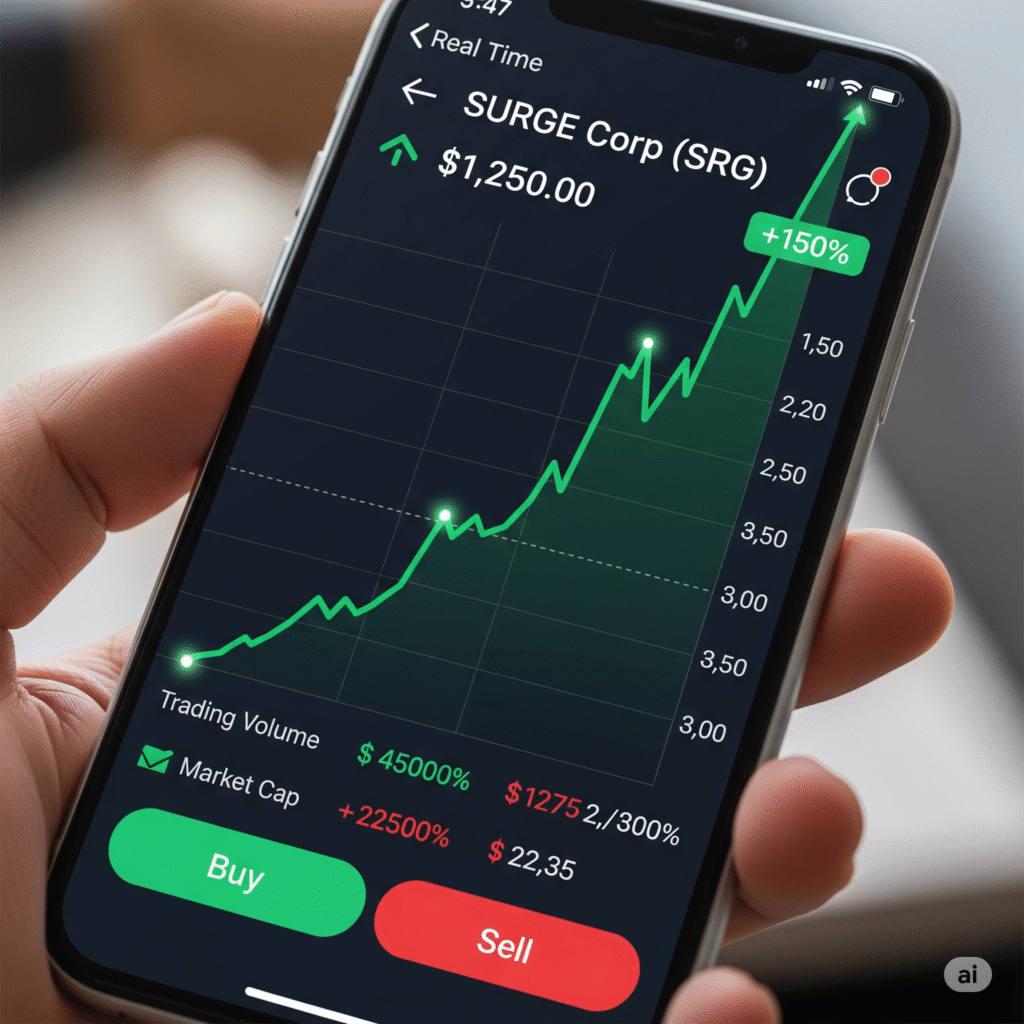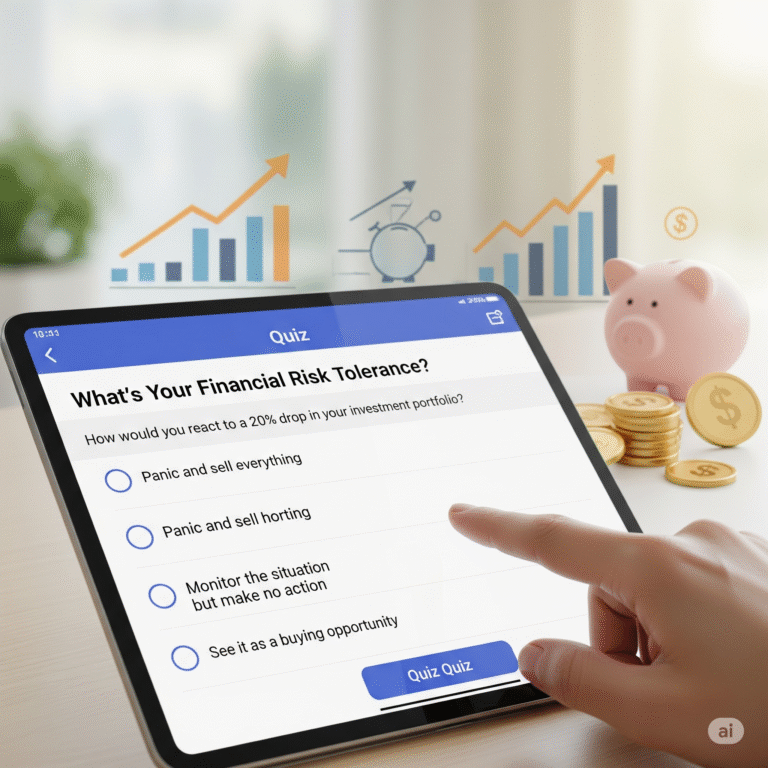Stock investing is transforming fast, and in 2025, free AI tools are revolutionizing how investors study markets, monitor trends, and make better choices. AI tools for stock investing save you time, minimize risks, and maximize returns—without paying hefty software costs.. Now, with the ease of free applications such as ChatGPT or Google Bard, one can digest news, review financial reports, and even make trade recommendations in seconds. This blog takes you through the full cycle of investing – from generating ideas to managing risk – and illustrates how AI and free data platforms can assist at every stage. You’ll get sample prompts to ask in ChatGPT or Bard, along with examples of the type of response they may return. We also discuss some popular free resources (Finviz, Yahoo Finance, etc.) for screening and tracking stocks.
How Free AI Tools for Stock Investing Enhance Decision-Making
Free AI Tools for Stock Investing aren’t merely about ease — they assist investors in making better, fact-based decisions. By processing large sets of data, identifying trends, and eliminating human error, these tools bring to light information that would take hours to find by hand.
For instance, sentiment analysis through AI can instantaneously indicate what the market is feeling about a particular stock, and predictive models bring to light potential price action. This makes investors move quicker and with more certainty.
Ultimately, utilizing Free AI Tools for Stock Investing makes decision-making faster, more accurate, and objective — essentials of every successful investor.
Before diving into the best free AI investing tools of 2025, it helps to understand how AI is transforming trading strategies globally—[Investopedia] offers a great overview.
By using Free AI Tools for Stock Investing, you can automate repetitive tasks and focus on long-term strategies.
Best Free AI Tools for Stock Investing in 2025
1. Free AI-driven investing tools for Idea Generation
AI has the ability to generate ideas for investments by observing overall market trends and news quicker than a human reader. As an example, you can instruct ChatGPT to browse recent news or spot hot sectors. It may point to sectors such as renewable energy, AI, or biotech on the basis of increasing demand. You might also use Google Bard (with current news) or request that Bard/ChatGPT summarize social media chatter or analyst reports. The AI will lack current quotes, but it can guide you to the themes and industries to look into.
Example Prompt: “List 3 rapidly growing tech industries in 2025 and give two significant stocks in each.”
Example AI Output: “Cloud computing and generative AI exhibit robust growth. AI services benefit NVIDIA and Microsoft. Cybersecurity is a growth area too – see Palo Alto Networks and CrowdStrike. (Reasoning: increasing security requirements and AI adoption.)”
Example Prompt: “What are the industry trends fueling renewable energy stock growth?”
Example AI Output: “Falling solar prices and government green initiatives are pushing solar and EV-related shares. Firms like Tesla (EVs) and First Solar (solar panels) have experienced increasing revenues as demand increasespageon.ai.”

AI can analyze news headlines, earnings announcements, and analyst reports to identify patterns. For example, a ChatGPT question such as “Summarize the leading stock news of the week” might respond with a list of companies in the news. This gets your thinking started by pointing you in directions of possible ideas. Be sure to verify any idea (AI can identify themes but can’t ensure profit).
2. Company Screening
Once you have some ideas, use screeners and AI to winnow the list. Free stock screeners (no AI, but effective) such as Finviz and Yahoo Finance allow you to sort through hundreds of stocks . For instance, you can use Finviz filters for “Market Cap > $10B”, “P/E < 25”, and “Revenue growth > 20%” to discover big, growing businesses. Yahoo Finance’s screener can perform similar filtering (it even allows you to filter on ESG metrics).
Finviz Example: Choose Sector: Technology, make EPS growth next year > 15% and Debt/Equity < 0.5. Finviz will then display all US tech stocks that pass through those filters.
Yahoo Example: Use Yahoo’s stock screen to filter for “Dividend Yield > 2%” and “P/E < 20”. You get value or income stocks.
You may also use ChatGPT or Bard to narrow down screening logic. For example:
Example Prompt: “List 5 S&P 500 companies with ROE > 15% and price-to-book < 3.”
Example AI Output: “Apple (AAPL), JPMorgan (JPM), and Nike (NKE) qualify, with low ROE and moderate P/B.”
By adding AI language prompts to these screeners, you save time. As an example, after sourcing candidates, have ChatGPT compare two company fundamentals: “Compare AAPL and MSFT on revenue growth and debt.” The AI can provide an abridged summary of each company’s financials, although check against official data.
3. Fundamental Analysis
Following screening, dive deeper into a firm’s financial condition. Free AI tools can scan fundamentals by reading between the lines of annual reports or earnings announcements. ChatGPT and Bard can consume text or numbers and boil down key points. Feed in a company’s latest quarter highlights, for example, and ask it to summarize.
Example Prompt: “Here are Tesla’s Q4 2024 results: Revenue $X, profit $Y, EPS $Z. Summarize the performance and any red flags.”
Example AI Output: “Tesla’s revenue went up 20% year-over-year, and net income rose 15%. Margins remained flat at ~25%. Debt, however, was up. Overall, solid sales growth but monitor the increasing debt. (Source: Tesla Q4 earnings)”
AI can also calculate financial ratios and pick them out. For example, request “Debt-to-equity and current ratio for Company X.” The AI can respond “Debt/Equity is 0.3 (low risk) and current ratio is 1.8 (healthy liquidity).” You can request: “What does a P/E of 25 and PEG of 1.2 imply?” ChatGPT could respond that a PEG close to 1.0 implies the stock is reasonably priced for its growth rate.
A few sophisticated AI stock evaluators (such as Zen Ratings) employ machine learning to sort through dozens of variables (revenue, margins, cash flow, etc.) to rate stockswallstreetzen.com. Those aren’t free, but ChatGPT can replicate a simplified version.
Example Prompt: “Dissect Amazon’s most important financial trends: revenue, margins, cash flow.”
Example AI Output: “Amazon’s revenue is 10% higher (principally cloud and ads), operating margins fell from 7% to 6% (cost increases), and free cash flow is still healthy at ~$20B. Analysts comment its balance sheet is strong with little debt.”
Briefly, utilize AI to provide rapid write-ups of financial reports. Cross-reference always, but AI provides you with a quick summary and sometimes even points out things (such as a sharp debt increase) that you may miss.
4. Timing & Technical Analysis
Timing buys and sells is notoriously difficult, but AI software can help with technical analysis and sentiment of the market. ChatGPT can define chart indicators; Google Bard may even include current market data if you input plugins or the latest model. You can also utilize free charting websites such as TradingView (with many hundreds of indicators) and then employ AI to help you interpret what the indicators could possibly mean.
Example Prompt (TA): “On a 1-year graph of stock XYZ, the RSI is 75. What does that tell us for trading timing?”
Example AI Output: “A reading of 75 indicates the stock is overbought. It usually means it may pull back soon. You could wait for a drop or look for confirmation to buy.”
Example Prompt (Patterns): “Find support and resistance levels for a stock that’s hovered $50–60 for months.”
Example AI Output: “The $50 mark has served as a robust floor (support) several times, while $60 has been the cap for gains (resistance). A break above $60 would indicate a fresh uptrend.”
To analyze sentiment, you can ask ChatGPT to scan headlines or tweets (feed it in as headlines) to measure market sentiment. For instance: “Here are 10 news headlines on Company X this week. Are they generally positive or negative?” ChatGPT will analyze them and report sentiment (though it does not web browse live, you can cut and paste them).
Example Prompt: “The most recent 6 months of AAPL are an overall uptrend with periodic pullbacks. What does this imply about timing?”
Example AI Output: “AAPL has made higher highs and higher lows, which is a sign of a good uptrend. You may want to buy on dip to trend line or moving average. Don’t buy at peak when momentum may wear off.”
Keep in mind, AI in timing is a tool – it can show you overbought/oversold states or flag out but never use it as a guaranteed signal.

AI can also be used to backtest ideas. ChatGPT itself doesn’t execute simulations, but there are free tools like TradingView that allow you to simulate strategies using historical data. You can then describe the results to ChatGPT: e.g., “I backtested a moving average crossover on SPY for 5 years. Profits were 8% CAGR.”. Is the strategy solid?” ChatGPT could reply, “An 8% CAGR implies modest profitability but keep drawdowns and market conditions in mind.
5. Portfolio Construction
Portfolio balancing and diversification are complicated. AI can assist by recommending asset combinations based on your risk tolerance. ChatGPT is impressively capable of “big picture” portfolio thinking. You can enter your age, investment time horizon, and priorities (income versus growth) and have AI write a model portfolio.
Example Prompt: “Create a defensive stock portfolio for someone 55 with $50,000 with a focus on dividends and capital protection.”wallstreetzen.com
Example AI Output: “A defensive portfolio would contain 40% large-cap dividend stocks (such as utilities and consumer staples), 30% fixed-income or bond ETFs (such as TLT for long-term Treasuries), 20% high-quality dividend ETFs (such as VIG), and 10% cash. Individual stocks can be Johnson & Johnson, Procter & Gamble, and Verizon for stable dividends. This balances income and less volatility.”
Example Prompt: “Make a moderate-growth portfolio for a 30-year-old with $20,000.”
Example AI Output: “For growth, look at 60% in U.S. broad stock ETFs (such as VTI), 20% in emerging/international market ETFs, 10% in tech sector (such as QQQ), and 10% in bonds or cash. Put some into high-growth stocks such as AAPL or NVDA. This portfolio wants growth but still has bonds to soften declines.”
The AI will state the rationale (age, risk tolerance). It won’t provide specific fixed percentages to follow blindly, but it offers a framework. You can then tailor by tweaking weights or asking open-ended: “What if I wanted increased exposure to tech?” or “Include gold or crypto for inflation protection.”
For more sophisticated strategies, utilize scenario prompts:
Example Prompt: “What sectors typically spearhead in early economic rebound?”wallstreetzen.com
Example AI Output: “Early recovery tends to have consumer discretionary and materials at the forefront as spending and industrial production improve. Healthcare will likely lag behind.” (Follow-up: what ETFs follow those sectors, etc.)
Getting these well-organized breakdowns, you acquire the reasoning of diversification. The AI is there to ensure you take risk factors (such as rebalancing away from hot sectors) instead of picking stocks randomly.
Align your investments with long-term plans using our [Financial Goal Checklist Tool]
6. Performance Monitoring
Once you have developed a portfolio, you must monitor its health and performance over time. There are free resources such as Yahoo Finance where you can input a portfolio of tickers and get real-time price information and charts,. Yahoo will notify you if a holding crosses a threshold (a basic type of AI alert).
For examination, you may occasionally ask an AI to tell you what your returns mean. For instance:
Example Prompt: “My portfolio last year returned 15%, compared to the S&P 500’s 12%. I was 50% tech and 50% bonds. What can I learn from that?”
Example AI Output: “You outperformed the market, likely thanks to your tech allocation. However, having 50% in bonds usually lowers risk – check if your volatility was lower than the S&P 500’s. Also, ensure your bond portion served its defensive purpose (maybe it did during any market dips).”
AI can flag if any holding is dragging performance or if your portfolio deviates from your intended risk profile. You can even ask for a risk report: “Given these quarterly returns, what is the portfolio’s volatility and Sharpe ratio?” ChatGPT might not compute numbers without data, but it can explain how to interpret those metrics if you have them.
Regular checking is essential. Use calendar reminders or AI notifications (“Alert me if stock X drops by 10%”) to respond on time. And then utilize AI to query: “Stock X dropped 15% this month – do I buy more or sell?” The AI can propose things to consider (e.g. investigate the reason for drop, company fundamentals).
You can measure expected returns with our simple [ROI Calculator]
7. Risk Management
Lastly, AI can also manage risk by stress-testing scenarios and drawing attention to concentration. Employ ChatGPT to perform “what-if” analyses:
Example Prompt: “What would happen to my portfolio that is 40% real estate stocks and 30% tech if interest rates rise?”
Example AI Output: “Higher rates can hurt real estate (REITs such as O have a high debt burden) and might make valuations in tech look rich. Consider investing in bond ETFs or utilities to hedge rate of interest risk. Monitor statistics such as Fed rate expectations and REIT yield spreads.”
Example Prompt: “My portfolio is 50% technology stocks. What risks should I watch?”
Example AI Output: “Your primary risk is tech concentration. A general market decline or sector rotation (to value or energy stocks) may trigger significant losses. Keep an eye on signs of tech sentiment (such as Nasdaq indices) and consider diversifying into consumer staples or healthcare ETFs to balance.”
AI can even propose quantitative risk tests. For example: “Compute the value at risk (VaR) of the portfolio.” ChatGPT cannot perform math directly, so you might issue a Python prompt or Portfolio Visualizer for VaR and then request that ChatGPT explain it to you. For persistent monitoring, create news alerts (Google, Yahoo) for each position and utilize AI to summarize adverse news: copy a bad earnings headlines list into ChatGPT and query, “Am I concerned by these?” AI will enumerate issues (greater inflation, regulatory concerns, etc.) and perhaps refer to historical parallels. AI alerts are applicable to portfolio-level as well. Some professional (paid) portfolio analyzers employ machine learning for projecting portfolio volatility or suggesting rebalances. Even without them, you can have periodic check-ins with AI.
For instance, quarterly, input ChatGPT queries such as “Based on my holdings (specify tickers and weights), what is the sector and region allocation?These platforms are among the most reliable Free AI Tools for Stock Investing, offering real-time data and predictive analytics
These are some of the most effective Free AI Tools for Stock Investing, helping both beginners and experienced traders make informed decisions.
While AI tools can process massive data and spot patterns quickly, they’re not perfect. Learn more about what AI currently can—and can’t—do for investors from a recent [MarketWatch] analysis.
Conclusion
As we move through 2025, taking advantage of Free AI Tools for Stock Investing can help everyday investors stay ahead in a competitive market.The AI will detect if you’ve inadvertently over-exposed to one sector or market (e.g. too much domestic compared to international). At every one of these steps, keep this in mind: AI advice isn’t infallible. Always double-check critical information (payment dates, prices) through official channels. Use ChatGPT more as a wise assistant than an irrevocable decision-makerwallstreetzen.comwallstreetzen.com. It makes research more democratic by stating concepts clearlywallstreetzen.com, but excessive dependency without cross-checking may prove dangerous. Conclusion Free data platforms and AI tools have the potential to radically enhance each of your investing steps. ChatGPT and Google Bard can generate ideas, explain fundamentals, suggest timing cues, and help you build a balanced portfolio.
Screeners like Finviz and Yahoo Finance give you the raw data filters, while portfolio trackers and alert systems keep you on top of performance and risk. Use the prompts above as starting points: customize them to your goals, and always follow up AI answers with your own research. Using these methods, individual investors enjoy formidable “quant” support at their fingertips – just be sure to remain curious and wary.
FAQs – AI tools for smarter investing in 2025
- Are AI tools such as ChatGPT and Google Bard suitable for use in making investment decisions?
AI tools are excellent aides for research and analysis but not for final, unchecked investment decisions. Always double-check their results with official data sources and conduct your own due diligence. - What are some of the top free sources discussed in the blog for stock screening?
The blog also points to popular free sites such as Finviz and Yahoo Finance, which have strong screeners and data to enable you to screen and monitor stocks according to certain criteria. - Can I benefit from technical analysis and trading with AI?
Yes, AI can assist in defining chart indicators, recognize patterns, and help interpret data from charting sites such as TradingView. It can make suggestions but must be viewed as a means to guide your strategy and not as a sure shot indicator for trading.





